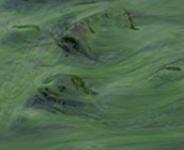Benefits Assessment Tools - Valuing Reductions in Surface Water Nutrient Pollution

EPA Grant to North Carolina State University (NCSU)
In 2007, EPA selected NCSU to receive a grant of $423,841 to conduct a project to improve the application of empirical methodologies to the economic valuation of the benefits from reducing nutrient levels in the nation’s water bodies. The goal of this grant was to produce tools that would aid states in their attempts to estimate monetary benefits associated with nutrient reductions, as they strive to adopt numeric nutrient criteria into their state water quality standards.
Approach of the Project
First, NCSU used expert elicitation (structured interviews with lake water quality experts) to generate data needed to estimate functions mapping objectively measured nutrient parameters -- e.g. total nitrogen, chlorophyll a -- to qualitative descriptions of lake water quality that were meaningful to potential recreational users or lakes. Second, survey data from residents of Southeastern states were used to estimate a function that maps changes in water quality to economic values related to improved recreation possibilities. The models were constructed at common temporal and spatial scales and designed so that the outputs from the water quality models could serve as input to the economic model.
Taken as a whole the project provides the ability to (a) estimate how an improvement in water quality measured via a change in ambient pollution maps to a change in qualitative descriptions of lake water quality, and (b) examine how the change in qualitative quality maps to a per recreation visit dollar value of the change. Per trip values can be aggregated to an annual value ('willingness to pay' by lake users) using estimates of the total trips made to the quality-improved lake.
Tools Resulting from the Grant
The grant was completed in 2012. North Carolina State University developed practical tools for use by state water quality managers who need to conduct benefits analysis.
There are three grant outputs that together can be used to value the nonmarket benefits of numeric water quality criteria. These outputs are described and made available for download below:
- Water quality model – a methodology that maps measures of ambient water quality obtained for a lake from a monitoring network (e.g., total nitrogen, chlorophyll a) to a descriptive quality-level indicator consisting of five ordinal ranks. Makes use of expert elicitation data and appropriate statistical analysis.
- Economic valuation model – a methodology that maps changes in the ordinal water quality indicator to dollar-denominated economic benefits from the change. Makes use of a stated preference choice experiment linking recreation choices to water quality levels.Economic valuation model – a methodology that maps changes in the ordinal water quality indicator to dollar-denominated economic benefits from the change.
- Spreadsheet tool for applying the protocol – a tool that packages the water quality and economic models for use by policy analysts. Users enter site-specific data on baseline water quality at the policy lake, the proposed numeric criteria, and aggregate recreation visits to obtain predictions of the economic benefits of the proposed criteria. A user manual accompanies the Water Quality Benefits Spreadsheet.
The grant is also available as one final report. You will find the water quality report, final report on stated preference surveys, and user manual for the water quality benefits spreadsheet in this single report.
EPA Contacts
For more information about this grant, please contact Julie Hewitt (hewitt.julie@epa.gov) at 202-566-1031.
